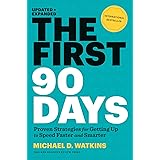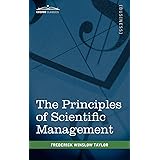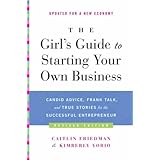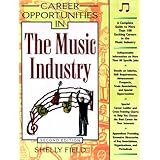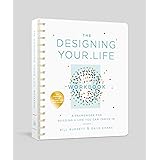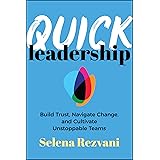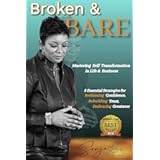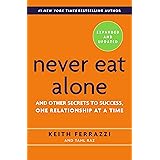Are you wondering why your resume might not be generating the interview calls you expect? In today’s competitive job market, an effective resume is often the gatekeeper to your next career opportunity. While it might seem like a daunting task to overhaul your entire professional document, the accompanying video highlights that even small, strategic adjustments can lead to drastic resume improvement. Indeed, many job seekers overlook the power of the initial impression their resume makes. This detailed guide expands upon the critical insights shared, providing actionable steps and additional context to help you transform your resume from overlooked to outstanding.
The core philosophy for a successful resume revolves around quickly capturing the attention of hiring managers and demonstrating clear value. It has been observed that recruiters often spend merely five to seven seconds scanning a resume before deciding whether to delve deeper or move on. Therefore, every element, particularly within the crucial top section, must be meticulously crafted to communicate your strengths and career aspirations effectively. Focusing on these initial moments ensures that your application is given the consideration it deserves, potentially leading to more interview opportunities.
Optimizing Your Resume Header for Immediate Impact
The very top of your resume, known as the header section, is often the first thing a recruiter sees. It is essential for this section to be clear, concise, and professional, immediately conveying your identity and how you can be contacted. As was demonstrated in the video, many resumes contain common pitfalls in this area that can easily be rectified. Ensuring proper formatting and relevant information is paramount for making a strong first impression.
Making Your Name Stand Out
Your name should be the most prominent element in your resume header, easily visible at a glance. It is often recommended that your name be presented in a larger font size than the rest of the text, typically between 18 and 24 points, depending on the font style chosen. This simple change allows your name to “pop,” as was mentioned, establishing immediate recognition. The goal is for your identity to be unmistakable, even during a quick scan, which aids in recall for the hiring manager.
Refining Your Contact Information
Outdated or overly detailed contact information can detract from a professional appearance. For example, including a full street address is now considered unnecessary and potentially a privacy concern; a city and state (e.g., San Francisco, California) are typically sufficient. Furthermore, a professional email address is non-negotiable. An email like “dhill@gmail.com” is far more appropriate than one that is overly casual or reflects personal interests, as this can inadvertently convey a lack of professionalism. Personal branding is also significantly enhanced by a custom or personalized LinkedIn URL, which simplifies access to your comprehensive professional profile without cluttering the header with a long, auto-generated link. These small adjustments cumulatively contribute to a cleaner, more professional presentation.
Beyond Passé: Crafting a Modern Objective Statement
While traditional, lengthy objective statements are indeed considered obsolete, a refined version of this section remains incredibly powerful. The key distinction lies in its conciseness and clarity of purpose. An effective objective statement, as illustrated, is a sharp, brief declaration of your immediate career goal, tailored specifically to the role you are seeking. This strategic approach instantly informs the hiring manager of your intent, allowing them to quickly assess your fit.
Why Modern Objective Statements Work
The primary function of a modern objective statement is to act as a signpost for the hiring manager. For example, stating “Senior Director of Software Engineering in Healthcare” immediately communicates your desired role and industry. This directness saves time for both parties, as a hiring manager looking for such a profile will quickly recognize a match. This instantaneous communication is invaluable; studies suggest that an immediate connection with the resume’s purpose can be established in as little as 0.02 seconds when the objective is clear. This efficiency is critical in a world where application volumes are high and attention spans are short.
Tailoring Your Objective Statement
A single, simple objective statement can significantly boost your resume’s effectiveness. Rather than a generic aspiration, it should be focused on the specific job you’re applying for. For instance, an entry-level professional might state, “Aspiring Marketing Coordinator seeking to leverage digital media skills for innovative campaigns at [Company Name].” A mid-career professional could state, “Experienced Financial Analyst seeking to contribute strategic insights and optimize portfolio performance in a Senior Analyst role.” For career changers, it might be, “Motivated Project Manager transitioning into a Technical Writer role, eager to apply organizational skills to translate complex information.” Each example clearly articulates the applicant’s immediate aim, making it effortless for the reader to understand their intentions and assess their suitability for the position.
From Skills List to Story: Developing a Powerful Professional Summary
Moving past the header and objective, the professional summary is your opportunity to truly shine. Many resumes merely list skills without context, leaving hiring managers wondering about the applicant’s proficiency or impact. The video emphasized the importance of a professional summary over a simple skills list, advocating for contextualized skills and quantified results. This section serves as a compelling narrative, detailing what you have achieved with your abilities.
Contextualizing Your Skills
Instead of simply stating “Project Management, Data Analytics, Java, Open Source,” a powerful professional summary describes how these skills have been applied to deliver tangible outcomes. For example, instead of listing “Mentoring,” it could be integrated into a statement like, “Led and mentored high-performing teams of 150 software developers, fostering a collaborative environment that improved project delivery times by 20%.” Such framing not only demonstrates the skill but also illustrates its practical application and resulting success. This shift transforms a list of capabilities into a compelling story of professional accomplishment.
Quantifying Your Achievements
Quantifiable achievements are the cornerstone of a strong professional summary, providing concrete evidence of your impact. The examples shared in the transcript for “David Hill” are excellent starting points: “delivered $45 million in software solutions,” “managed $10 million projects,” and “resulted in $17 million in renewed contracts.” These numbers offer undeniable proof of value. When drafting your own summary, consider metrics such such as:
- **Revenue Generation:** Increased sales by X%, secured Y million in new contracts.
- **Cost Savings:** Reduced operational expenses by X%, optimized budgets by Y.
- **Efficiency Improvements:** Streamlined processes, saving Z hours annually; improved project completion rates by X%.
- **Team Leadership:** Managed teams of X individuals, oversaw Y projects.
- **Growth Metrics:** Expanded customer base by X%, grew market share by Y%.
- **Problem Solving:** Solved X critical issue, resulting in Y benefit.
The goal is to move beyond generic statements to provide specific data that demonstrates your capabilities. For instance, rather than saying “responsible for customer satisfaction,” a more impactful statement could be “Improved customer satisfaction scores by 15% within six months through proactive outreach and feedback implementation.” These details make your summary persuasive and memorable, ensuring that your resume improvement efforts translate into real results.
The “Magazine Cover” Analogy and ATS Optimization
The analogy of your resume’s top section being a “magazine cover” is particularly apt; it must entice the reader to explore further. This front-and-center approach is critical for grabbing attention before a recruiter even reaches your detailed experience section. Moreover, a well-crafted professional summary and objective statement are vital for Applicant Tracking Systems (ATS). By strategically integrating keywords from the job description into these sections, your resume is more likely to pass through initial automated screenings. This dual benefit—human appeal and ATS compatibility—significantly enhances your resume’s chances of being seen by a hiring manager.
By implementing these thoughtful changes to your resume’s header, objective statement, and professional summary, your document can be transformed. These initial sections are powerful tools, capable of showcasing your best attributes and making a compelling case for your candidacy even before your full work history is reviewed. A strong top section truly sells employers on reading your resume, dramatically improving your chances of securing that coveted interview.


